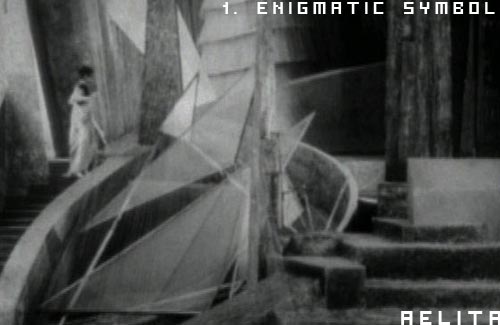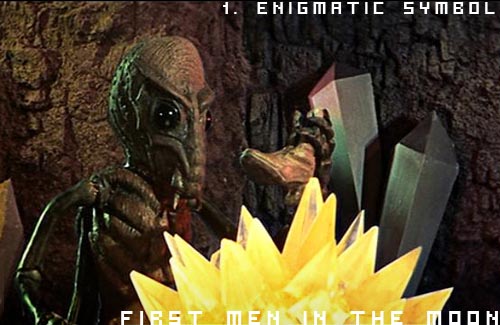 |
Aelita (1924) is the story of a Russian scientist, Los, who travels to Mars to escape the authorities after he believes he has murdered his wife. On Mars he meets Aelita, the Queen of Mars, who has been spying on him using an enigmatic and powerful telescope.
While attempting to reach Mars, Los uses no communications or computer technology. Therefore, it is Aelita's telescope that is the only significant movie element to analyze.
http://en.wikipedia.org/wiki/Aelita http://www.imagesjournal.com/issue08/reviews/aelita/text.htm |
 |
|
First Men In The Moon (1964) is an adaptation of an HG Wells novel written in 1899. It tells the story of Mr Bedford, an English author, who makes a bizarre journey to the Moon with his fiancee Kate and his next door neighbour, a mad scientist named Cavour, in the 19th century. The movie stays true to Wells' original description of the Moon and its inhabitants, but adds a modern beginning in which they show a 20th century Moon landing that uncovers evidence of Cavour's previous expedition. Similar to Aelita, the actual space launch depicts no use of computers or communications technology. Rather, it is the aliens who posses a device that approximates a computer and allows for communication between themselves and the human visitors. The main computing power on the Moon takes the form of large glowing crystals. In fact, most of the technology on the moon is portrayed as a variety of crystals. These crystals (shown above) allow for communication between the aliens and Cavour, and are operated by the aliens when in close proximity. The energy source for the communications crystals (and the aliens themselves) is a giant crystal located in the middle of their subterranean compound. The giant crystal only produces power when struck by light from above. The props themselves were likely constructed out of resin casts and illuminated from within the podium on which they stood. The larger crystal, particularly the power-generation crystal, was the product of a special effect in which a smaller cast was enlarged and superimposed on the scene. Through the action on the Moon, the crystals allow for the plot exposition through communication, as well as providing a "deus ex machina"-style escape when an eclipse powers down their colony. They are unique in terms of actual precedents because of their ability to translate languages. Similar computer technology was still years away at the time of the movie. Generally, they also serve to create a bizarre environment that is both foreign to the audience and visually exciting. Although a general audience at the time of the films release would have found the supposed technology in the crystals to be unbelievable, the movie is able to use them effectively because of its comic attitude, and as an HG Wells adaptation. A general cause-and-effect relationship was clear in the operation of the crystal versus its power source, but any details about its operation were left as mysteries. Similar to Aelita, the communication devices were visually exciting, but operated in conventional ways both in terms of the plot and their actual operation. Neither were symbolic of a deeper cultural ideology, or detailed in their technical operation, but instead were to be understood as symbols for advanced alien technology. |
Means of Perception (Solaris, Outland, Total Recall) |